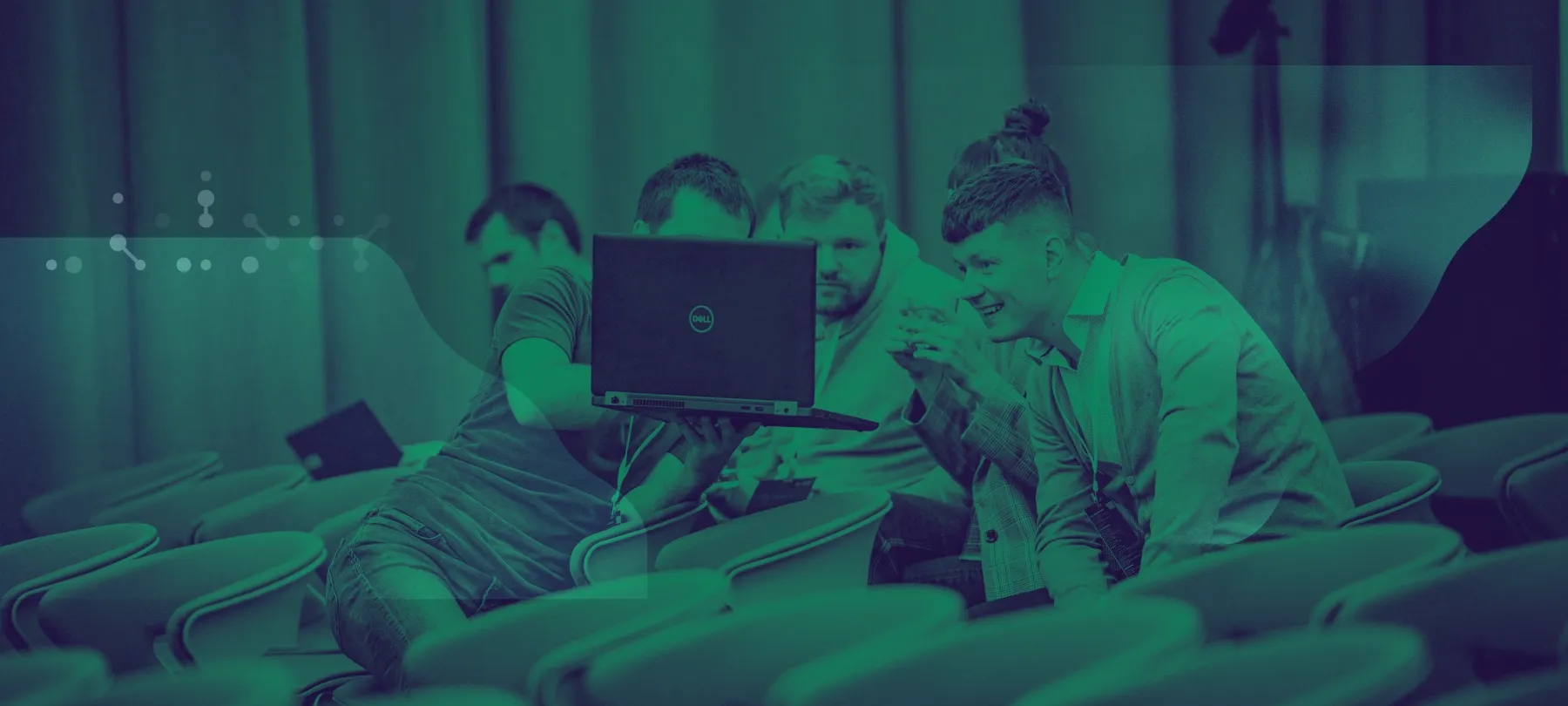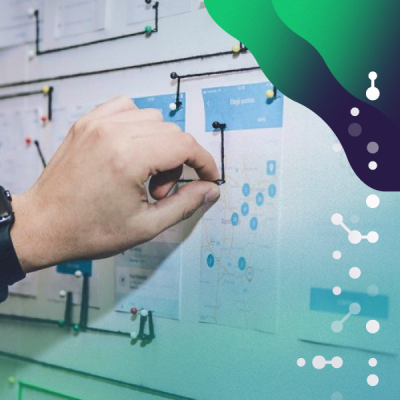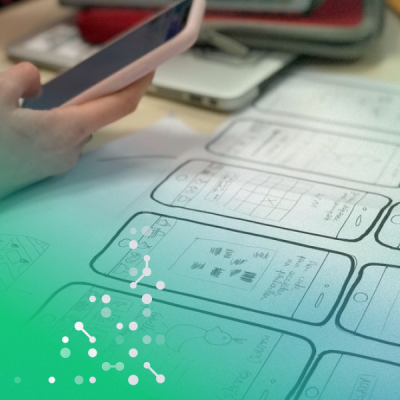Client story
Mapping out victim support services
We analysed the processes behind victim support services to figure our the best IT solution for the system.
Overview
In cooperation with the Social Insurance Board and TripleDev OÜ, we conducted an analysis of the Data Register of Social Benefits’ (STAR) victim support services. The goal was to optimise the main processes of the services and to find the best IT solution for securely offering complete victim support services within the STAR information system.
The work included service design for the victim support services, planning the conversion to microservices, and mapping out the necessary architectural work. We also provided an estimation for the size of the planned development and architecture works by creating an indicative overview of the costs.
Development works have now been planned based on the work done by us, which will implement the changes in STAR. As a result of these development works, it will be possible to better support victim support case works as well as standardise them in the future, which will improve the quality of social work and make it more cohesive within all local governments in the long term.

Problems
The victim support service was suffering from the lack of a united IT solution
The Social Insurance Board (SIB) offers the much needed victim support service, which provides free counselling and information about where to get help to people who have been victims of violence or a crime.
Offering this service is made difficult by the fact that the data is fragmented across various information systems and different institutions use different document management systems and office software.
In other words, the SIB lacks a united IT solution for offering victim support services which in turn means a lot of exhausting manual work for the victim support specialists for managing data, but that poses a risk to the efficiency and security of the services. Additionally, the existing IT solutions do not cover all the necessary services nor are they enough for case work management. The scarcity and fragmentation of data led to a decrease in how quickly victim support workers were able to work and posed a threat to the quality of the decisions they were making.
To resolve these issues, the Health and Welfare Information Systems Centre announced a tender, which Trinidad Wiseman won in cooperation with TripleDev OÜ.
Solution
How did we get from a monolith to microservices with good user experience?
The victim support service was using the existing STAR information system, which is meant for local governments and the SIB for conducting social work. The goal of STAR is to decrease the time that officials would otherwise need to put into documentation and other paperwork and enabling them to instead focus on the most crucial part of their work – supporting those who need help. STAR works as a cohesive digital file where all of a person’s data is stored as well as information about the procedures done with that person to help them, e.g. which benefits and services they have been granted, what meetings have been held with them and what kind of counselling they have been provided.
But continuing to develop STAR based on its existing architecture turned out to be complicated, costly and potentially connected to different security risks. The existing system also did not provide the best user experience. All of this meant that the STAR architecture needed upgrading, but this had to be done by adding and/or updating business functionalities. The purpose of our analysis project was to figure out which jobs needed to be done to make STAR capable of offering the features needed for casework management while remaining user-friendly.
In short, the analysis project had three main goals
Optimise the main processes of the victim support services.
Find the best IT solution for securely offering complete victim support services within the STAR information system based on casework principles.
Map out the necessary architectural works for creating victim support functionalities within STAR.
In the analysis, we researched the IT requirements for victim support services, taking into account all of the services, functionalities, interfaces and existing work processes. The goal was to figure out and describe the best development solution. We also described the main principles and technological options for switching the STAR architecture over from a monolith one to a microservices one. As a result of this work, we were able to optimise the psychological help service process, the workflows connected to the volunteer functionality and the standard workflow.
We also created a prototype to visualise the main views and user journeys of the new solution. We tested the prototype on users and amended it based on user feedback. Then, we created an overview of the architecture and development works that are necessary for offering the victim support service on the STAR platform. Finally, we provided an estimation for the size of the planned and prioritised them.
The work consisted of three stages

Mapping the as-is situation
- Familiarising ourselves with the materials and environments
- Conducting interviews and creating personas
- Mapping the as-is state of the work processes

Creating a solution for the future
- Mapping the to-be state of the work processes
- Creating the prototype
- Testing the usability of the prototype

Mapping the development and architecture works
- Mapping and estimating the development and architecture works
- Creating a migration plan for transferring data into STAR
Stage 1
Mapping the as-is situation
Familiarising ourselves with the materials and environments
Preparation had a very important role in this project as it involved us needing to familiarise ourselves with both the service processes and information systems as well as the legislation around it.
More precisely, the victim support law was being changed around the time of the project. This is the law that determines the organisational, economical and judicial grounds for governmental victim support as well as the conditions for the services and benefits.
This meant that the project team needed to study and understand the appropriate legislation and ensure that the new information system and work processes would meet both the current and incoming regulations.
Conducting interviews
The main goal of the interviews was to map out existing victim support service processes and get an overview from all involved parties of their vision for the new solution, including necessary functionalities and connections with other information systems.
It was also important to get end user feedback for the victim support services to identify bottlenecks that could be fixed with the new information system.
To achieve all this, we conducted 5 individual and 8 group interviews, involving the main user groups connected to the victim support services – the victim support specialists, volunteer, psycholocial help service providers and victim support clients.
Creating personas
Using the interviews and previously collected data, we described the user personas for the future solution, which we then used when sketching and planning the new solution. Personas help to keep the focus and to design a clear and united vision of the end user needs for the team.
They also help to prioritise the functionalities, to simplify the decision-making process and, if necessary, to communicate end user needs outside of the team.
Altogether, we created 5 personas that encompassed the various user groups involved in offering the services (a victim support specialist, a volunteer, a service coordinator and a psychological help service provider) as well as the service end user (a victim support client).
Mapping the as-is state of the work processes
During our co-creation workshops, we described 12 different victim support service workflows with the help of the victim support specialists (e.g. psychological help, the women’s support centre service, mental health counselling, and conflict mediation).
The goal of the as-is state analysis was to get an overview of how each service was currently being conducted, to figure out the weak points and problem areas of the processes, and to draw conclusions about what options are available for fixing the as-is state of things.
Stage 2
Creating a solution for the future
Mapping the to-be state of the work processes
Based on the results of mapping out the as-is state of things, we started to create a future vision for the services AKA conducting a to-be analysis.
Together with the client, we generated ideas for designing more efficient procedural and work processes for the victim support services, taking into account the current issues and unrealised needs. When designing the workflows, we leaned on the goals and needs of both the victim support specialists and end users.
But we also had to account for the requirements and limitations set by legislation and casework principles. As a result of the analysis, we were able to create future visions for all of the services. We also created in-depth descriptions for the psychological help service process and volunteer functionality workflows as well as the standard workflow, which was suitable for offering most of the different services.
Creating the prototype
Using the information we had gathered during the previous stages of the project, we created a prototype to visualise the user interface of the new system, thus providing an overview of the newly created information architecture, the page layout, and the functionalities.
We created the prototype to showcase the standard victim support service workflow, the psychological help service, and the volunteer functionality.
Using the prototype, we were able to ascertain whether the solution met business needs and would be technically doable, and we were able to validate it with end users. The prototype was also an important foundational piece for mapping out and estimating the development works.
Stage 3
Mapping the development and architecture works
Mapping (backlog) and estimating the development and architecture works
In cooperation with representatives of the client, we created and overview of the architecture and development works that need to be done for providing the standard victim support workflow, psychological help service and volunteer functionality on the STAR platform. Then, we provided an estimation of the size of the planned works and prioritised them.
Creating a migration plan for transferring data into STAR
We used the point of view of developing the victim support functionality for describing the microservices domain and created a migration plan for transferring the psychological help service data into STAR.
New solution
A faster service with better quality
The new, improved and user-friendly IT solution helps improve the quality and speed of the victim support service, thereby changing people’s lives.
The speed at which the victim support specialists were able to work and their decision-making quality both suffered due to insufficient and fragmented data. This affected the ability to provide services to one of the most vulnerable groups in our society – those who have been victims of violence or suffered through trauma. Victim support services are oftentimes of vital importance for these people and the specialists’ capability to provide the help they need directly affects their future prospects and recovery.
Thus, it was essential to create the prerequisites for developing an efficient IT solution that would enable the victim support specialist to quickly access the complete relevant data. As a result of the analysis, we were able to figure out the best solution for securely offering complete victim support services within one information system, thereby helping to improve both the quality and availability of the service.

The results of the project
At the end of the project, we handed over the results of the thorough analysis we had conducted, which the client could then use to continue with the development works:
-
the interview summaries;
-
the personas;
-
the as-is and to-be process maps;
-
the prototype;
-
the data model;
-
the migration plan;
-
the description of the microservices domain;
-
the prioritised backlog of the development and architecture works along with the indicative size estimations.
After the analysis was completed, the client had the development works done which has resulted in the optimisation of the main processes of the victim support services. The goal is to provide the services by using the STAR information system which now supports casework-based procedures. Additionally, a new user-friendly user interface was also implemented in STAR for the victim support functionality and by now, an IT solution for managing volunteers along with the necessary functionalities has also been implemented in STAR.
Cooperation
The best solution is born out of good cooperation with the client
In nearly all the stages of the project, there was a huge emphasis on input from the client. Without the knowledge and experience we gleaned from the victim support and the SIB specialists, we would not have been able to realise this project. The specialists participated in the group interviews to provide us with an overview of the as-is state of STAR along with the problems it created in the context victim support work. They also helped us test the prototype as it was being created.
Additionally, the Health and Welfare Information Systems Centre as the procurer had a very clear understanding of the expectations for the new solution and the information system functionalities, and they were able to provide us with important information about the different factors that affected the project.
Together with the client, we described the current victim support work processes and brainstormed ideas for new, more efficient workflows. The client’s active participation continued during the prototype creation stage. We were given a thorough input for the expectations and requirements set for the information system, and we got regular feedback for the prototype. In conclusion, the client was closely included throughout the whole process and completely devoted to helping us figure out the best solutions and ensuring the success of the project.
"Together with Trinidad Wiseman, we conducted a business analysis of our services. The process itself was extremely time-consuming, inspiring, and thorough. Our analysis partner’s approach and meticulousness provided us with a lot of new and surprising insights into our own services and helped us mould our processes into simpler and easy-to-understand schematics. Throughout the whole process, we could sense Trinidad Wiseman’s sincere wish to understand our processes and to offer us the best, most innovative, and clearest solutions. The methods they used helped us to identify various problem areas and to think about them in detail, and their clarifying questions brought into focus a wider view across all our services. Despite the very intense schedule, our cooperation remained smooth and fruitful."
Liis Sild-Harutši, the Social Insurance Board
